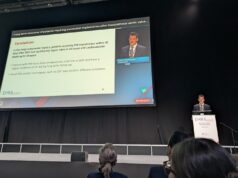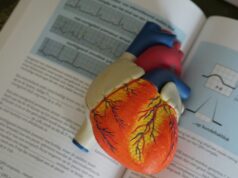
A new sub-analysis of the MADIT-CRT multicentre trial has shown that implantable cardioverter defibrillator (ICD) shocks at the time of defibrillation threshold testing in patients with mild symptoms of heart failure are not associated with an increased risk of heart failure or death or future episodes of ventricular tachycardia and ventricular fibrillation.
Mehmet K Aktas, University of Rochester Medical Center, Rochester, USA, reported the data in the February 2013 issue of HeartRhythm.
“A great deal of controversy exists as to whether or not ICD shocks increase a patient’s risk for adverse outcomes,” Aktas et al wrote. The findings from this analysis are contrary to recent publications that all ICD shocks, whether appropriate or inappropriate, are harmful, they commented.
“The clinical consequence of ICD shocks delivered during defibrillation threshold testing is unknown,” reported the authors, therefore Aktas et al aimed to evaluate the impact of ICD shocks, differentiating various energy levels, delivered during defibrillation threshold testing in patients enrolled in the MADIT-CRT (Multicenter automatic defibrillator implantation trial with cardiac resyncronisation therapy) study.
In this analysis, 1,725 (95%) patients out of the 1,820 patients enrolled in the MADIT-CRT study had information regarding induced shock testing. From these 1,725 patients, 1,659 underwent defibrillation threshold testing within one month of device implant. The researchers grouped these patients into three categories: patients who received one shock (n=365), patients who received two shocks (n=896) and patients with ≥3 shocks (398).
Aktas et al also grouped patients according to shock energy levels testing into two categories: those who received high-energy ICD shocks (>20J) and those who received low-energy shocks (≤20J). The authors found that 51% of the patients had a 14J shock, 7% had a 17J shock, 24% had a 21J shock, 8% had a 31J shock, and 1% had a 41J shock.
The researchers found that “increasing number of ICD shocks during defibrillator testing was not associated with an increased risk for the primary endpoint of heart failure or death of for any of the secondary endpoints of heart failure alone, or death.” Moreover, delivery of high- vs. low-energy ICD shocks did not have any association with adverse clinical outcomes. “This finding was consistent when patients were analysed according to the treatment arm, cardiomyopathy etiology, type of intraventricular conduction delay, and gender,” the authors wrote.
This sub-analysis has some limitations, according to Aktas et al: there was not a formal defibrillation threshold testing protocol in the design of the MADIT-CRT study, the effects of different defibrillation threshold testing protocols were not tested, there was lack of biomarkers on myocardial injury, and the cut-off for high- vs. low-energy ICD shocks is not a standard cut-off but rather was defined for the purposes of this analysis.
Aktas et al wrote: “Although we examined the effects of induced ICD shocks delivered during defibrillator threshold testing, and not the effects of clinical shocks on outcomes, the findings of our study do not support the notion that all ICD shocks are harmful.”
About the MADIT-CRT study
The MADIT-CRT study was designed to determine if cardiac resyncronisation therapy defibrillator (CRT-D) therapy would reduce the primary endpoint (all-cause mortality or heart failure events, whichever occurred first) when compared to patients receiving ICD-only therapy. The study population involved cardiac patients in New York Heart Failure Association functional class I or II (no or mild symptoms) who had either ischaemic or non-ischaemic heart disease with left ventricular dysfunction (ejection fraction <30%) and QRS duration >130ms on ECG.












